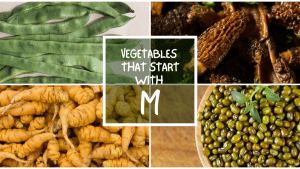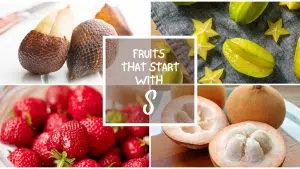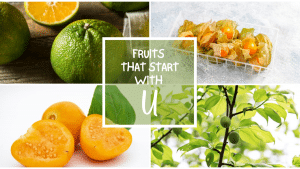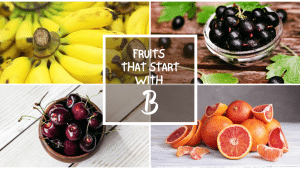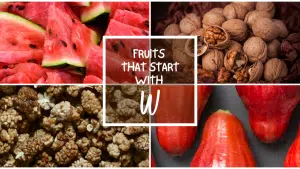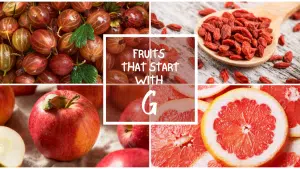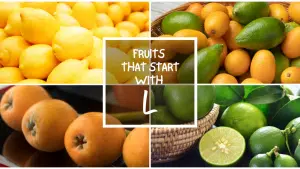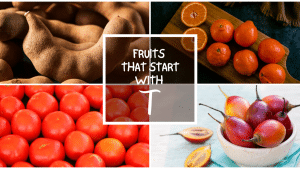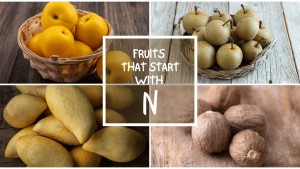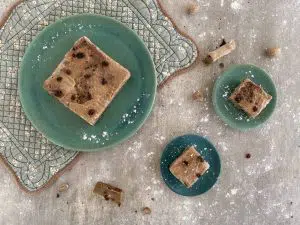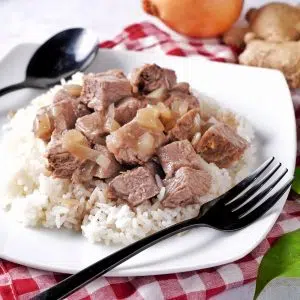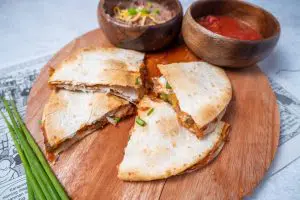All The Fruits That Start With M
Important Note: When you buy through our links, we may earn a commission. As an Amazon Associate we earn from qualifying purchases. Content, pricing, offers and availability are subject to change at any time - more info.
When asked to name fruits that start with M, you will probably scratch your head trying to figure out which fruits to mention. Apart from the few common M fruits you know of, the list can be very long. You will probably be learning many of these fruits for the first time. To add to your knowledge of fruits, here is a list of all fruits that start with M.
- Mango
- Macadamia Nuts
- Mandarin
- Maracuya
- Melon
- Mamoncillo
- Madras Thorn/Manila Tamarind
- Mammee Apple
- Miracle Fruit
- Mangaba
- Marula
- Monstera
- Maprang
- Mamey Sapote
- Madrono Fruit
- Masak Hijau Banana
- Maqui
- The Final Letter
Mango

The scientific name of mango is Mangifera indica. Mangoes are tropical fruits belonging to the drupe family and are indigenous to Southern Asia and India. These succulent fruits have a sweet yellowish-orange pulp that surrounds a flattened seed at the center.
Ripe mangoes are creamy and tasty compared to unripe ones, which have a tart taste. Uses of ripe mango fruits include being blended to make jams and juices. You can also use mangoes in making salads and curries. However, the unripe mango fruits are best used in making pickles.
Mangoes are rich in Vitamin A, a nutrient that boosts your immune system and stimulates white blood cell production. These fruits also contain Vitamin C, which is responsible for maintaining healthy skin and hair. Mangoes contain lutein, an antioxidant that is beneficial to the health of your eyes.
Macadamia Nuts
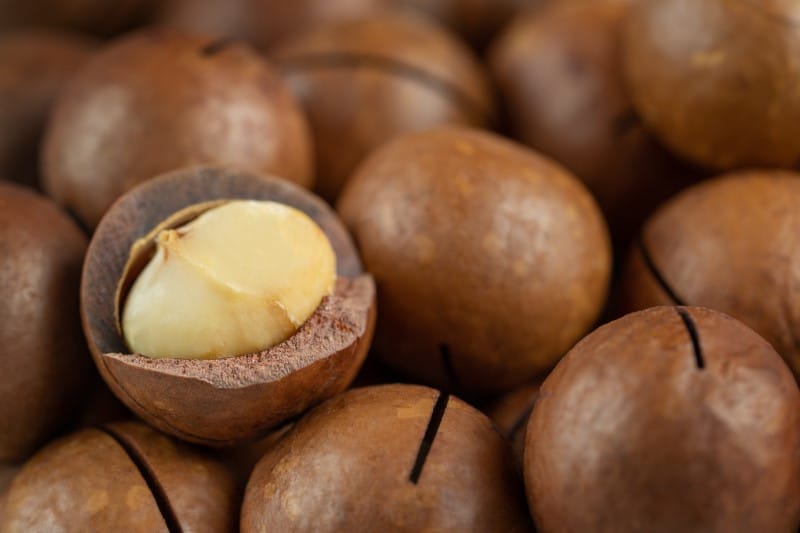
Genus macadamia is the scientific name given to macadamia. Macadamia are true botanical nuts that thrive in warm areas with high rainfall and humidity, such as Australia, South Africa, and some parts of Florida.
Macadamia nuts are best chewed dry, or you can have them roasted. You can also grind the seeds and sprinkle the powder into soups, salads, or stir-fries to add flavor. Macadamia nut butter can be used as a healthy dip. You can extract oil from the macadamia seeds and use it in the dressing of salads.
Macadamia nuts contain tocotrienol antioxidants with properties that help prevent various types of cancer by destroying free radicals in your body. Macadamia nuts are rich in oleic acid that contributes significantly to the health of your brain by protecting the brain from oxidative stress. The monounsaturated fatty acids in macadamia nuts help reduce the risk of diabetes and high blood pressure.
Mandarin

The scientific name of Mandarin fruit is Citrus reticulate. Mandarin is a native fruit of the Philippines and Southeastern Asia. The Mandarin fruits belong to the citrus family and are similar to oranges. However, these fruits are small in size and have a flat base.
When ripe, mandarin fruits have an orange-red color with an easy to peel skin. Beneath the skin, the fruit’s pulp is divided into juicy segments that can be easily separated from each other. Compared to an orange, mandarin fruits taste much better and are sweeter and more succulent.
Mandarin fruits are eaten fresh as a snack or in salads. You can also opt to paste the fruit and serve it with creams, desserts or use it as a sweetener in cakes. The juicy, sweet pulp can be squeezed to make juice.
Mandarin fruits are high in potassium, a mineral responsible for maintaining healthy blood pressure in your blood vessels. Mandarin is also rich in fibers, which are essential in improving digestive health. The folic acid in mandarin fruits makes it an essential requirement to boost the creation of red blood cells and the formation of neural tubes in expectant mothers.
Maracuya
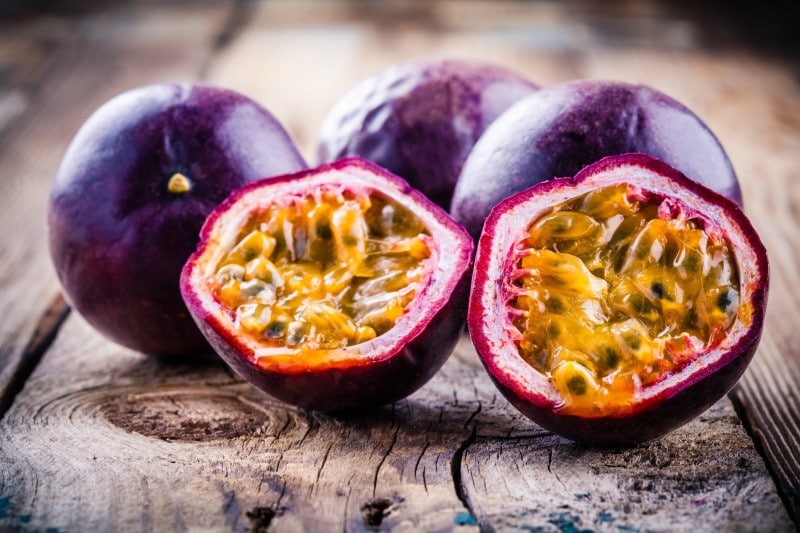
The scientific name of the Maracuya fruit is passiflora edulis. The Maracuya fruit is commonly known as passion fruit. These fruits are native to northern Argentina and southern Brazil and thrive well in subtropical and tropical areas where they are grown commercially.
Maracuya fruits are round and have a yellow or purple color when ripe. Inside the hard outer cover is a hollow cavity filled with jelly-like flesh covering brown edible seeds. The Maracuya fruit has a tropical flavor ranging from sweet to a bit tart, depending on the variety.
Maracuya fruits are often eaten raw for their sweet taste. You can choose to blend the maracuya fruits into juice. To boost the flavour in some foods, the maracuya pulp can be poured into cereals or on top of cakes. The Maracuya fruits can also be prepared as desserts.
Maracuya fruits contain a compound called piceatannol, which improves insulin sensitivity in your body, lowering the risk of diabetes. The antioxidants found in the passion fruits clear the free radicals in the body and reduce inflammation. Maracuya fruits are a rich source of vitamin C responsible for boosting the immune system and encouraging iron absorption into the bloodstream.
Melon
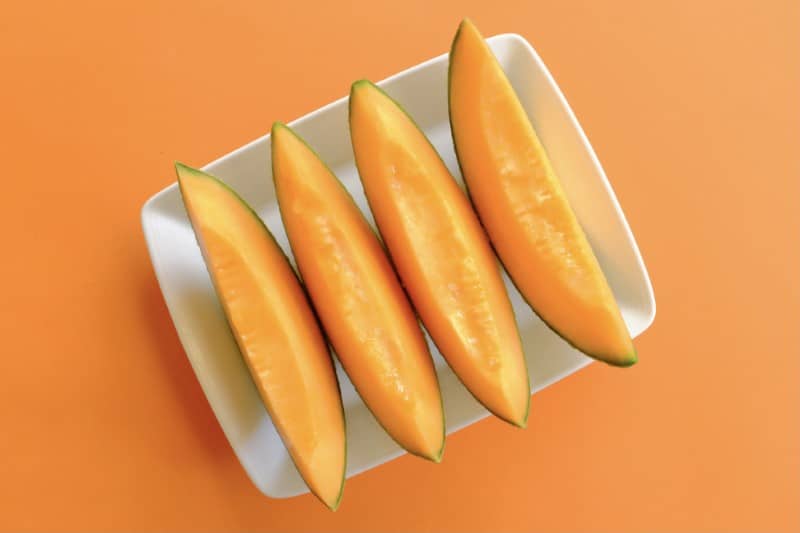
Melon fruit has the scientific name Cucumis melo, a native fruit of intertropical Africa. Melons are members of the Cucurbitaceae family. The fruit is currently being produced in countries like the United States, Egypt, India, Iran, Spain, China, France, and turkey.
Melon fruits are simple in appearance but rich in taste and flavors. These fruits are big and have a flaky, rigid outer skin enclosing a succulent, tasty pulp with edible seeds evenly distributed on it. Melon fruits can offer you a natural way to quench your thirst.
Melons can be enjoyed fresh or cut into pieces and mixed with other fruits to make puddings. The Succulent nature of melons makes them suitable to blend into juice. You can also crush the pulp into a paste and use it as a sweetener in the baking of cakes or serve it on top of ice cream.
Melons have an antioxidant called Lycopene which reduces inflammation and thus protects you against heart disease. The high fiber and water content in melons help ensure healthy bowel movements and hydrate the body. The presence of Vitamin C in melon fruits gives them the ability to provide you with healthy skin.
Mamoncillo

Mamoncillo fruits has a scientific name melicoccua bijugatus. These fruits are a crossbreed of lime and lychee, commonly known as Spanish lime. The Mamoncillo fruits grow in America, the Caribbean, and the Philippines.
Mamoncillo fruits are small and circular with shiny, jelly-like flesh. When ripe, Mamoncillo fruits change their skin appearance from slightly hairy to smooth and tough. The mamoncillo fruits have a sweet-tart pulp and one or two seeds at the center of the fruit.
Manoncillo’s skin is usually punctured before the flesh is eaten fresh. You can blend the fruits to make juice or reduce the pulp to make jellies and desserts. When Mamoncillo is soaked in sugar and ram, the resulting product is sweet alcohol.
These fruits are rich in Vitamins A, vital in maintaining healthy eyes. Mamoncillo fruits contain traces of iron, an essential mineral in producing red blood cells that help prevent anemia. The Spanish lime is rich in fibers that promote proper bowel movement and prevent constipation.
Madras Thorn/Manila Tamarind
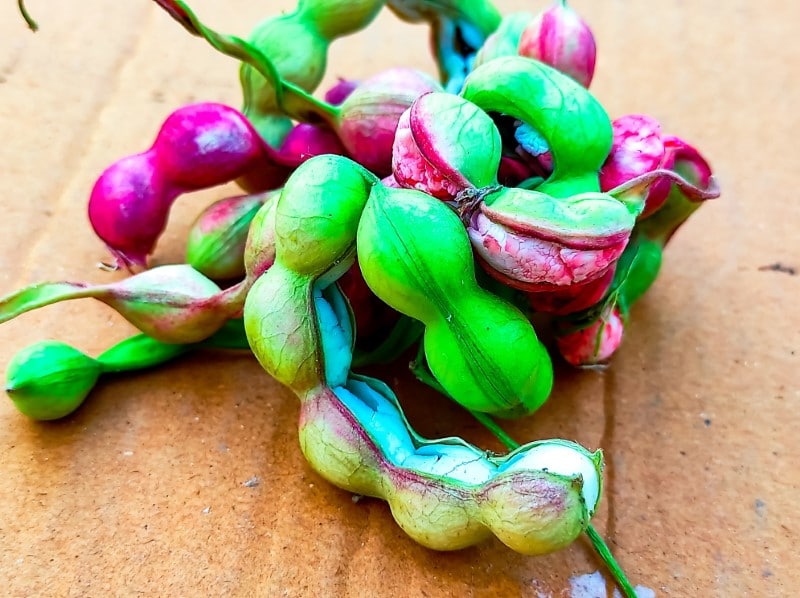
The scientific name for the mania tamarind is Pithecellobium dulce. The manila tamarind fruits are widely grown in tropical regions because the fruit tree is frost-sensitive. These fruits take the shape of bean pods and contain a thick, creamy flesh with seeds at the center.
Coincidentally, as the name suggests, these Manila tamarind fruits pulp have a tart, acidic flavor. The pulp of the manila tamarind fruits is eaten raw or squeezed to make juice. You can also use the seeds to extract oil used in cooking.
Manila tamarind fruits are rich in carbohydrates which is a great energy source. These fruits are also highly fibrous hence beneficial in promoting a smooth digestion process. Manila tamarind richly contains Vitamin C, which gives you a healthy immune system fit to fight infections and diseases.
Mammee Apple
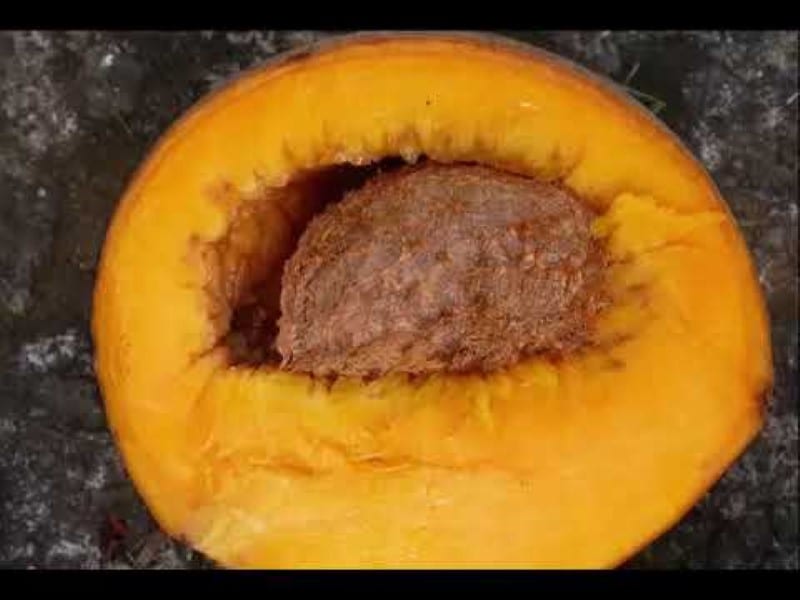
The scientific name given to Mammee apple fruit is mammea Americana. The mammee apple belongs to the berry family. These fruits are found growing in tropical and subtropical regions. You can easily find Mammee apples in the United States in some parts of Florida and Hawaii.
Mammee apples are round fruits with a short stem. When ripe, these tropical fruits’ skin changes from green to rust-brown. The mammee apple has a thick skin that is rarely eaten because of its bitterness. The flesh of the mammee apple fruits is tender to firm, juicy and tastes like passion fruit. Like other fruits, mammee apples have an inedible seed at their center.
Mammee apples’ pulp can be eaten raw or served in a fruit salad. The mammee apple can also be mixed with cream to its sweetness. You can opt to cook the fruit’s pulp in sugar to make jam. Mammee apples can also be sliced, mixed with grapes, and fermented to make wine.
Mamme apple fruits are rich in Vitamin B6, a mineral essential in maintaining normal brain functions and boosting your immune system. The Vitamin C contained in the mammee apple fruits protects against inflammation and reduces the chances of growing cancer cells in your body. The mammee apple is also rich in copper, a mineral beneficial in generating and maintaining healthy blood cells.
Miracle Fruit
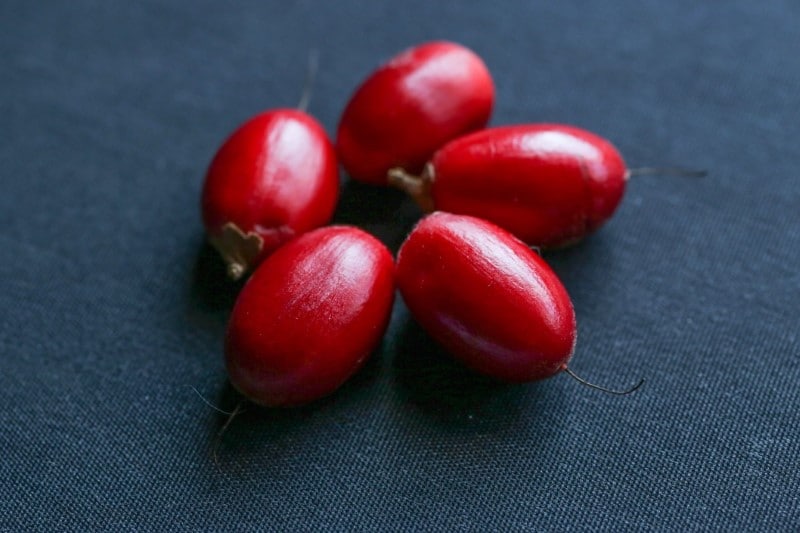
The scientific name for miracle fruit is Synsepalum dulcificum. These fruits are a member of the berry family and belong to an evergreen shrub mainly found growing in West Africa. However, you can find the miracle fruits available in frozen form in some parts of the world.
The miracle fruits are small berries with a thin skin with a deep red color. The seeds in these berries make up a large part of the fruit. The flesh of the miracle fruits is pleasant, sweet, and has a sub-acidic flavor.
As the name suggests, these fruits can work miracles by temporarily changing the taste of bitter fruits to sweet. These fruits contain glycoprotein molecules that can block the sour taste glands in the mouth and enhance the sweet-taste glands. However, it takes around 30 minutes before this miracle disappears.
Miracle fruits have a trace of vitamin A which is beneficial in maintaining good vision. The miracle fruits can regulate blood sugar in diabetic patients by reducing insulin resistance. These berries also contain Vitamin C, which is helpful in white cell production and fighting infection and diseases.
Mangaba
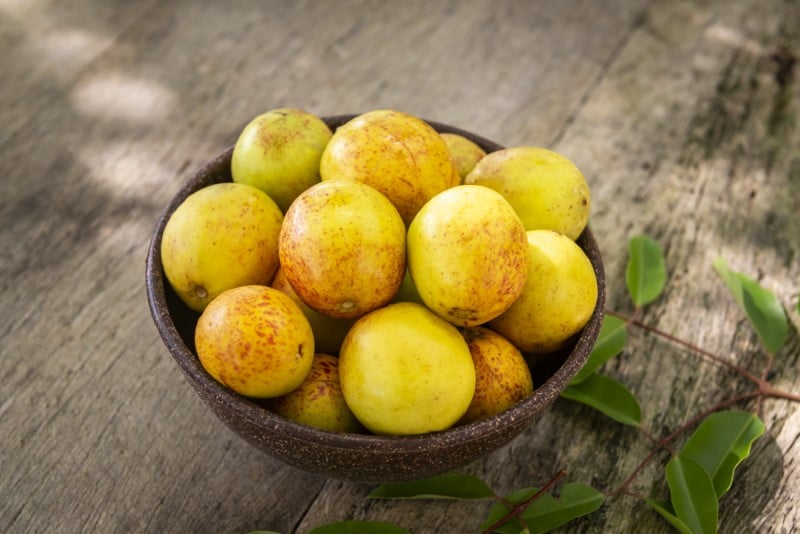
The scientific name of mangaba fruit is Hancornia speciosa. Mangaba are wild fruits found growing in the highlands of Brazil, along the northern coastal region. When ripe, the skin of mangaba fruits turn yellow with some splashes of red on them. Mangaba fruits have a unique, appealing aroma and are slightly round.
Mangaba fruits have a soft, fibrous flesh that is very tasty. The fruits are often eaten fresh. However, they can be processed to make juice, ice cream, and jams. You can also opt to ferment the syrup of the mangaba fruit to make wine. These fruits are highly perishable and are thus harvested before they ripen to extend their shelf life.
The mangaba fruit contains vitamin C, which mainly boosts the immune system. These fruits also have high traces of iron which reduce your risk of getting anaemia. Mangaba also contains B-complex Vitamins that helps with weight loss.
Marula

The scientific name given to the marula fruit is Sclerocarya birrea. The marula fruit tree is found growing in many sub-Saharan African countries. These fruits are usually green and turn yellow when ripe.
Ripen marula fruits have a pleasant smell and a sweet pulp with some tart taste. The marula fruits have a thick skin that is not edible and a big nut-like edible seed at the center of the fruit. These fruits are often eaten raw. These frits can also be processed to make alcoholic beverages. The marula’s fruit kernel can be crushed and used in the baking of biscuits and cake or chewed as a snack.
Marula fruits are high in vitamin C and antioxidants, giving you healthy, glowing skin. These fruits also contain calcium and potassium, minerals responsible for providing healthy, strong bones. The traces of oleic acids in marula fruits can help improve your brain functions and concentration.
Monstera
Monstera deliciosa is the scientific name of monstera fruits. Monstera are tropical fruits that are only safe when eaten ripe. When eaten unripe, monstera fruits contain calcium oxalate, which will give you a burning sensation in your throat and mouth. Monstera grows in warm and humid climates like Southern Mexico and Central America.
Ripe monstera fruits will have creamy flesh exposed beneath the green scales. This creamy flesh is what is edible. As the name suggests, these fruits are delicious with a flavor combination of pineapple and banana. The monstera fruits are mainly chewed fresh and enjoyed as a snack.
Monstera fruits contain traces of phosphorus that helps in the growing and repairing of tissue cells. The rich content of carbohydrates in these monstera fruits makes them a suitable energy booster in the body. The monstera fruits contain proteins that reduce appetite and hunger levels in the body, thus helping give you healthy eating habits.
Maprang
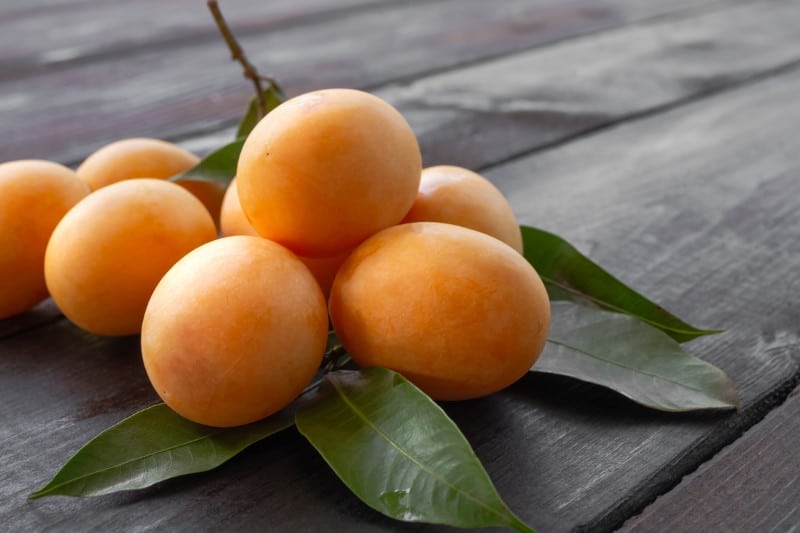
The scientific name of maprang is bouea macrophylla. Maprang fruit is native to South East Asia in places like Thailand. Its English names vary and can also be called mango plum. Maprang are yellow fruits that take the shape of eggs belonging to the mango family but are relatively smaller than mangoes.
Maprang has a tiny purple edible seed at the center, which a knife can cut. The maprang fruit has a plum-like texture with a mango flavor. Maprang fruits are eaten raw or cut and prepared into salads. You can also use the fruit to make juice and jelly. The pulp of the maprang fruit can be cooked to make syrup.
Maprang is a rich source of ascorbic acid, which helps reduce your risk of getting heart disease and also helps in managing your high blood pressure. These fruits also contain dietary fiber that is important in ensuring the proper functioning of the digestive system. The maprang contains proteins that help in building and repairing body tissues.
Mamey Sapote
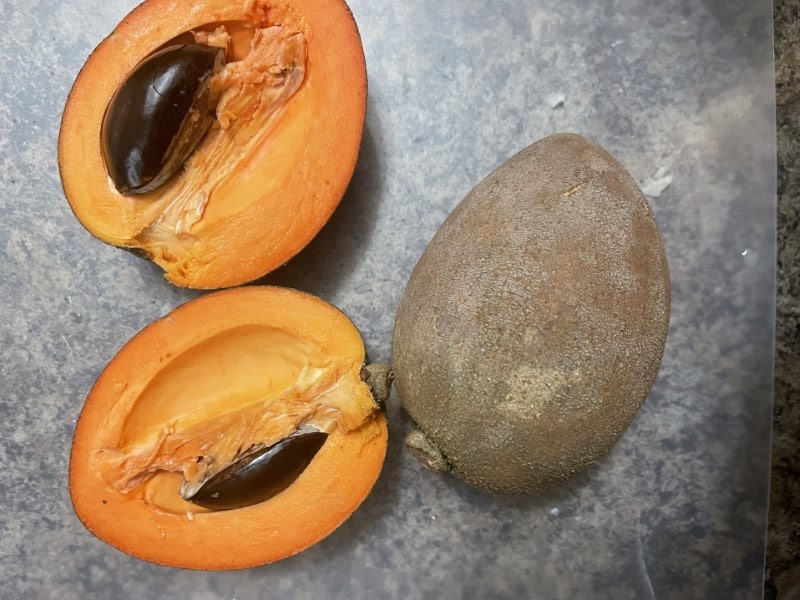
The scientific name of mamey sapote is Pouteria sapota. The mamey sapote are fruits native to Central America, Mexico and some parts of Florida. These tropical fruits have an inedible brown skin with a pit at the centre.
Mamey sapote fruits resemble an avocado. When unripe, the fruits are very hard to cut open and are bitter. However, when mamey sapote fruits ripen, they become easy to cut open. The ripe fruits contain a sweet, creamy pulp that you can scoop with a spoon. The inner pulp is orange in color and a flavor with some hints of sweet potatoes and pumpkin.
Mamey sapote is often scooped with a spoon and eaten fresh, like avocadoes. You can also use the fruits to make jams, pastries, smoothies and pies. The mamey sapote can be reduced to paste and served with dishes like vegetables.
Mamey sapote fruits contain a substance called carotenoids, which are responsible for maintaining body tissues’ health. The mamey sapote fruits also contain fibers that help bowel movement and reduce the chances of getting haemorrhoids. These fruits are also rich in iron, which helps prevent anemia.
Madrono Fruit
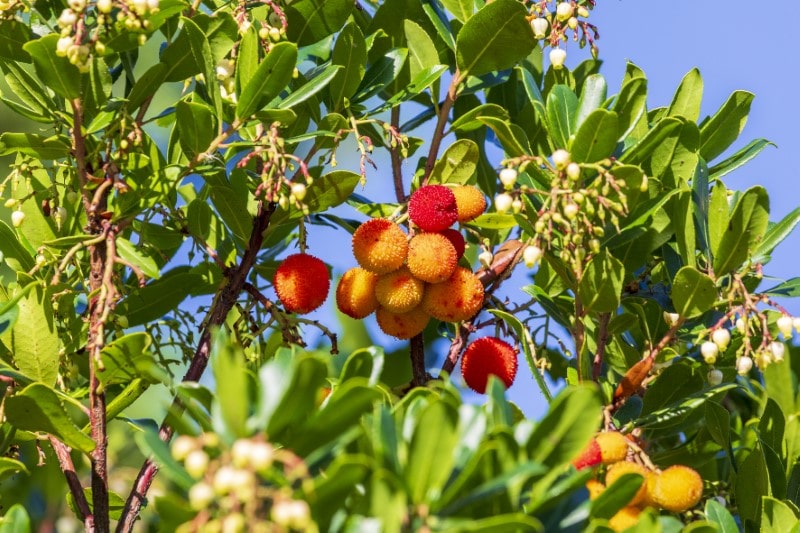
The Madrono fruit has the scientific name Arbutus unedo. Madrono fruit tree is native to forests in South America. These fruits are distributed in the Amazon region across Costa Rica and Brazil. Madrono is a sub-tropic and tropical fruit related to mangosteen.
Madrono fruits are small rounded yellow-orange fruits with a thin skin and big seeds inside. Madrono are juicy fruits with a sweet-sour taste. These fruits can be cooked to make jelly and jam or eaten fresh. The fruits can also be fermented to make alcohol or to produce honey.
The madrono fruits contain pectin, which is useful in the treatment of diarrhea. The Madrono berries are rich in polyphenols, which help in lowering the risk of coronary heart diseases and cancer.
Masak Hijau Banana
Musa acuminate is the scientific name given to Masak hijau banana fruit that belongs to a subgroup named Cavendish banana. Masak hijau bananas are majorly cultivated in the West Indies and Southeast Asia. These fruits do well in every humid tropical region.
Masak Hijau Bananas resemble the normal banana and change their skin color from green skin to yellow when ripe. Pealing the soft skin exposes a smooth, creamy and firm pulp that is sugary. The masak hijau bananas are sweet and with a distinct apple flavor. These fruits are eaten raw or can be made into puddings. You also can slice the fruit to make salads or blend it to make juice.
Bananas contain potassium minerals essential in reducing the risk of kidney stones as you age and keeping the nerves healthy. These fruits are also rich in fiber and water, which promote a healthy gut. Bananas also provide you with Vitamin C, antioxidants that support the heart’s health, preventing cardiovascular diseases.
Maqui
The scientific name is Aristotelia chilensis. Maqui belongs to the berry family and is found naturally growing in the wild in South American forests. These fruits are dark purple and round.
The Maqui berries are tastier if consumed wholly. These fruits can also be used to make juice. You can also dry the maqui berries and process them into dietary supplements like capsules and powders.
Maqui berries are rich in antioxidants like polyphenols, which neutralize free radicals, making you look younger. Maqui fruits contain natural sugars that are essential in regulating the body’s blood sugar levels. These berries are also a good source of fiber responsible for promoting a healthy gut in your body, helping indigestion.
The Final Letter
It is fascinating to realize the many valuable fruits starting with M present in the world around. Many of these fruits differ in taste, size, and nutritional value. It is always a good thing to learn new things, and I hope you enjoyed this learning experience.


